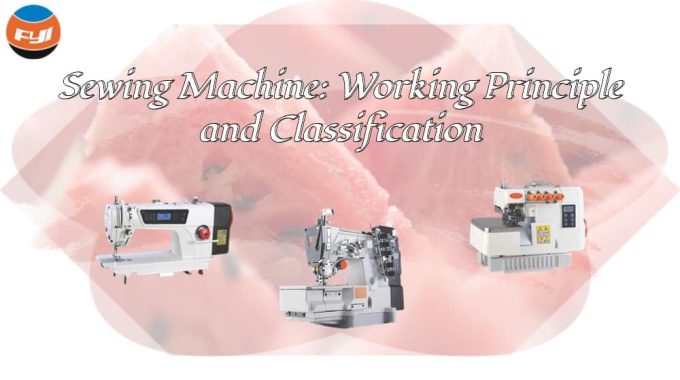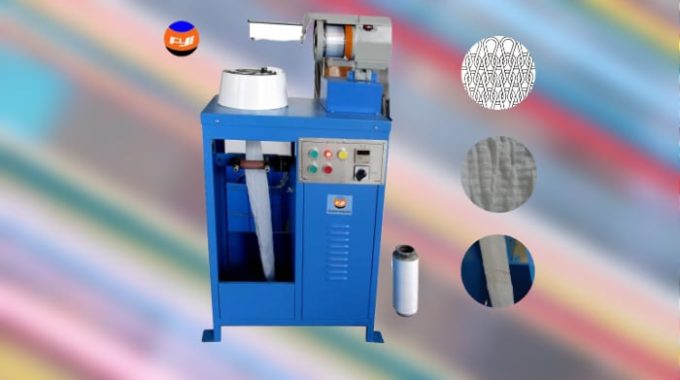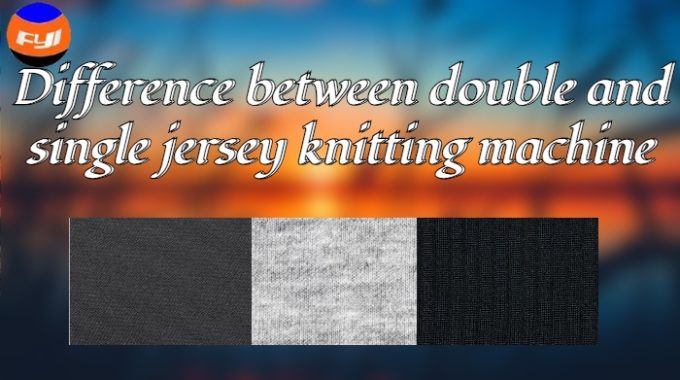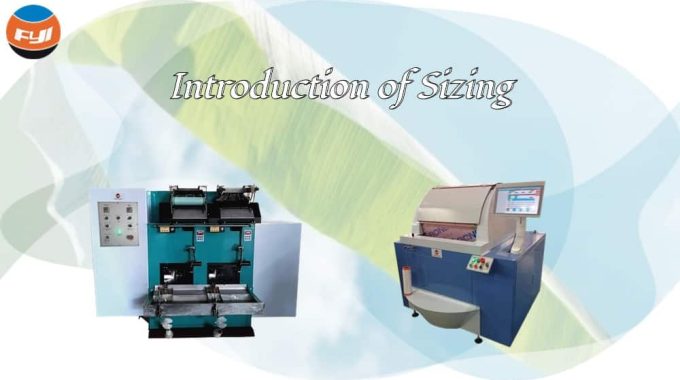
Sewing Machine: Working Principle and Classification
A sewing machine is a machine capable of forming one or more stitches on a sewing material, using one or more sewing threads to interweave or sew together one or more layers of sewing material. This kind of machine is suitable for sewing various fabrics such as cotton, linen, silk, wool, and artificial fibers, as well as leather, plastic, paper and other products. The stitches sewn are neat, beautiful, flat and firm, the sewing speed is also very fast, and it is very convenient to use.
Contents
Working principle
The loop stitching method is significantly different from ordinary hand sewing. In the most basic form of hand sewing, the sewist threads a thread through a small hole at the end of the needle and then threads it completely through two pieces of fabric, from one side to the other and back to the original side. This way, the needle moves the thread in and out of the fabric, sewing them together. Although this method is simple by hand, it faces great difficulties when sewing by machine. The machine needs to release the needle on one side and then quickly grab it on the other side. Next, it must pull all the loose threads out of the fabric, switch the direction of the needle, and repeat the steps in the opposite direction. This process is too complicated for a simple machine to be practical, even for handwork, and is only practical when using shorter threads.
In contrast, a sewing machine only requires part of the needle to pass through the fabric. On machine needles, the eye of the needle is behind the tip, not at the tail end of the needle. The needle is fixed on the needle bar and moves up and down by the motor through a series of gears and cams. As the needle tip passes through the fabric, it pulls a small loop on one side to the other. A device located underneath the fabric grabs this loop and wraps it around another thread or another loop of the same thread.
Chain stitch
The simplest chain stitch is the chain stitch. To achieve a chain stitch, the sewing machine forms a loop with the same length of thread behind the thread. The fabric is placed on a metal plate under the needle and held in place by the presser foot. Each time you start stitching, the needle passes through the fabric and pulls out a loop. A device responsible for making the loop grabs the loop before the needle is pulled out and moves in sync with the needle. Once the needle has penetrated the fabric, the feed dog assembly pulls the fabric forward.
When the needle passes through the fabric again, the new loop passes directly through the middle of the previous loop. The coil making device grabs the thread again and makes the coil around the next coil. This way, each coil holds the next coil firmly in place.
The main advantage of chain stitch is that it is very fast. However, it is not very strong and if one end of the thread comes loose, it can cause the entire suture to come loose.
Lockstitch
Most sewing machines use a stronger stitch called a whipstitch. The core components of a lockstitch device are the shuttle hook and bobbin assembly. The spool is located underneath the fabric and is a roll of thread. It is located in the center of the shuttle and is rotated by a motor and synchronized with the movement of the needle.
Similar to the chain stitch, the needle passes through the fabric and pulls out one loop, and while the feed dog moves the fabric forward, the needle rises again and loops in another loop. However, instead of joining the different coils together, this stitching mechanism joins them with another length of thread that has been loosened from the spool.
As the needle slips the thread into the loop, the rotating shuttle catches the loop with the crochet hook. As the shuttle rotates, it pulls loops around the thread coming from the spool, making the stitches very strong.
Sewing machine classification
Classified by objects of use
1. Household sewing machine: Suitable for home use, capable of sewing clothes, curtains, tablecloths and other household fabrics.
2. Industrial-grade sewing machine: suitable for use in production sites, with fast sewing speed and high efficiency. It is usually used in clothing, shoes and hats, bags, car seats, furniture and other industries.
3. Portable sewing machine: Small in size and light in weight, it is very suitable for carrying on business trips, but it is not recommended to be used for a long time.
Classification by sewing method
- Overlock sewing machine: It is one of the most common sewing machines. It can be used for sewing and patching clothing. The stitch length can be adjusted and it is suitable for sewing fabrics of various materials.
- Chain sewing machine: suitable for sewing various medium-thickness fabrics, usually used in the production of handicrafts and home textiles.
- Overlay sewing machine: It can sew fabric and lining at the same time, and is suitable for sewing thick coats, cotton-padded clothes and bedding.
Classified according to functional characteristics
1. Multi-needle sewing machine: suitable for sewing products of the same style in large quantities, with high-efficiency sewing capabilities.
2. Multifunctional computer sewing machine: It can sew various complex shapes of fabrics, and has a variety of sewing effects (such as zipper stitching, embroidery, eccentric stitching, etc.). It is also equipped with an intelligent control system and LED display, making it easy to operate. Suitable for families and manufacturers.
3. Overcoat machine: It is suitable for overcoating edges of different thicknesses, can achieve excellent overcoat effects, and is easy to operate.
The above are several common classification methods of sewing machines. When choosing a sewing machine, you not only need to consider factors such as sewing materials, use environment, and economic strength, but also make choices based on the functional characteristics and applicable scenarios of different types of sewing machines to achieve optimal use results.


